Thirteen Questions for Wyatt Weed – Writer and Director of Shadowland
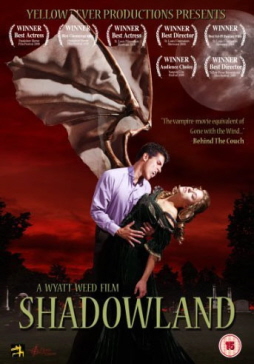 A few weeks back at the Chicago Comic Con, I had the pleasure of meeting the cast of Shadowland, a new indie horror movie written and directed by Wyatt Weed.
A few weeks back at the Chicago Comic Con, I had the pleasure of meeting the cast of Shadowland, a new indie horror movie written and directed by Wyatt Weed.
Forget the stars were beyond hot and that lead actress Caitlin McIntosh was a beauty queen. Forget my photographer Mr. Disney nearly put a perma-fog on his zoom lens trying to shoot through a crowd that was about six people deep; because in spite of the fact that all normal indicators point toward me having a thorough dislike for this whole crew, I couldn’t help it. I love indie film makers and the passion they have for making something different and “outside the system.”
And since being anti-establishment is part of the whole angst-y persona I’m trying hard to cultivate, I couldn’t wait to interview this lot and find out what drives such an all-consuming level of creativity.
So, since Wyatt soon realized I’d just keep stalking him until he relented (see past Goth Chick entries for proof), here it is.
A conversation with Wyatt Weed
Conducted and transcribed by Sue Granquist August 21 – Sept 13, 2010

Goth Chick: Your resume in film covers nearly every role in the process, from director and producer, to set decorator and editor, plus actor. Where did you first fall in love with the film industry and how did you get started pursuing it as a career?
Wyatt Weed: I literally grew up with movies. I saw 2001 in a theater when I was 4, so you can imagine the impact that had on my little brain. My parents loved movies, and since parents actually took their kids everywhere with them back then – and the kids behaved – I got to see everything – James Bond, John Wayne, Irwin Allen, you name it.
Then came late night TV. Back in the late 60’s and early 70’s, local TV stations were constantly running classic films – the old B&W monster movies, the big studio epics, everything. There weren’t a hundred channels full of alternate programming, just old movies, and I watched all of it, usually spurred on by my mom telling me what was good and what wasn’t, who was in it, what else they had been in, and why it was a classic.
During this time I became obsessed with King Kong, the 1933 version. No CGI, no big stars, just raw creativity in front of the lens. I must have read 5 or 6 books on King Kong – this was pre-Wikipedia, remember – and that really got the gears turning. Then I saw Jaws, and that one really clicked – scenes of real actors and a real boat in the same shot with a big mechanical shark – that got my brain going more. Jaws also made me aware of technique, even though I really didn’t know what that was yet. I just knew, even at 11, that the film was good.
So, all of this leads up to Star Wars and Close Encounters of the Third Kind [GC: We’ll have to clue him in that it’s CE3K if you’re a cool kid]. It’s a cliché, I know, but those two films pushed me over the edge, and are what really finally made me want to be a filmmaker. I borrowed a Super 8 mm camera, started shooting, and have literally been making films ever since.
Central Illinois in 1978 was not a film hub, and even though I found a few friends who also wanted to make films, I still wound up doing EVERYTHING – shooting, acting, writing, editing, sets, models – amazing experience. It all looked like crap, of course, but I was learning stuff that you couldn’t teach.
I eventually got into a volunteer production program at a local cable station, and started to learn about professional production. I went to film school, started getting a few local paying jobs, and then went to Hollywood.
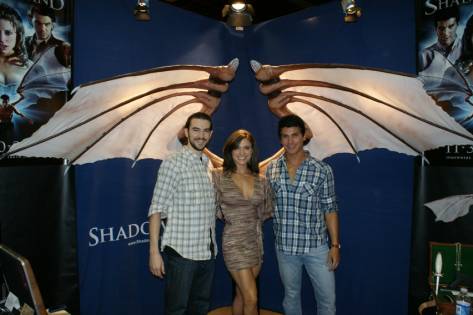
GC: Which role is the most fun?
WW: Acting, by far, is the most fun, but of course, directing has the most control. I always thought I would act my way into directing, until I realized how hard that was. It’s the reason why there is only one Robert Redford and one Warren Beatty. So I figured I would put acting aside and put that effort into the production side instead. I still really enjoy the acting, but I’ve acted in some projects that weren’t good, so you kind of roll the dice with acting, because you aren’t in control. You have to really be careful as an actor, look the project over closely before you get involved. (Ask Jason about that one!!) [GC: We’ll definitely ask Jason Contini about that! He plays vampire slayer “Julian,” and look for his 13 questions next week!]
Directing is all pressure and stress, so it is probably the least fun, but I have an illness, and I’m stuck with it. I have to say that editing is quite fun, however, probably the most fun after acting. It’s also a lot of work, but there are amazing things that can be done in the editing process. It’s like directing the film all over again, but this time, without the pressure.
It seems as though most of the films you have been involved in recently are rather dark in nature. Do you intentionally seek out this genre and if so, why?
DARK?!? What do you mean dark?!? Oh, bloody and complex and dramatically heavy and full of angst… OK, I know what you’re talking about.
I would say it’s just been coincidence, although it seems that first time directors generally go toward that dramatic, “I’m gonna make my mark” kind of film, and since I’ve been involved in a lot of first time projects, that may have pushed my average a little more toward the dark and intense side.
I love sci-fi, horror, and monsters, but I want to do many different kinds of films. I’d like to do an all-out fantasy, an 80’s-style comedy, some true-life stuff, and some bio-pics. My projects will be all over the map.
 What inspired you to write the story Shadowland?
What inspired you to write the story Shadowland?
I was walking past a construction site one night, and there was this huge, deep, hole in the ground, a foundation being dug. On the surrounding buildings, there were angel statues, and they seemed to be watching over the hole, guarding it. I wondered, what are they guarding us from? Then I imagined a woman crawling out of the hole, very mysterious, maybe good, maybe evil.
A few years later, when I got the chance to make my first feature film, I went back to that idea, and started developing it, but at first I was trying to steer clear of the vampire genre. I felt it had been overdone, and that the world didn’t need another low-budget vampire film, but as I began to develop the story more and more, I discovered that the vampire element worked really well. I determined that if I was going to go down that road, I was going to try and be original, and that I was going to treat it seriously and dramatically.
Some of the elements of the plot seem to lend themselves to historical folklore. What sort of research did you do? Did you actually speak to a priest?
I did a decent amount of research on the internet, Wiki and such, mostly with an eye toward old folklore, yes. The idea of Julian, the vampire hunter, using a special moss to detect a vampire’s presence came from that. His shotgun being able to fire stakes using the sabot technology came from that research as well. The great prayer that the pastor uses in the film was drawn from research.
The interesting thing about research, though, was that as I dug deeper, there were certain details that I became less enthused about, like a vampires’ reaction to sunlight. I believe it’s a rule that should be honored, but only to a certain degree. In my film, Laura hasn’t fed and become a full vampire yet, so she can move around in the light. She’s sensitive to it, but she doesn’t burst into flame.
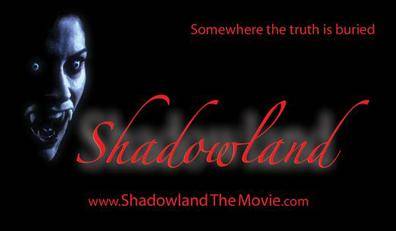 Over time I began to feel that other rules, such as the lack of reflection and not being able to enter a house unless invited, were just silly. They have a root in all of the mythology, but they are pretty silly ideas. You will see in the film that one vampire reacts very strongly to a cross, but in my mind it’s mainly because the cross is pure silver, and vampires have a specific allergy to silver. If there’s a sequel, a lot of my ideas and theories would get explained, such as the idea that vampires are essentially a line of humans that have splintered off and mutated genetically.
Over time I began to feel that other rules, such as the lack of reflection and not being able to enter a house unless invited, were just silly. They have a root in all of the mythology, but they are pretty silly ideas. You will see in the film that one vampire reacts very strongly to a cross, but in my mind it’s mainly because the cross is pure silver, and vampires have a specific allergy to silver. If there’s a sequel, a lot of my ideas and theories would get explained, such as the idea that vampires are essentially a line of humans that have splintered off and mutated genetically.
As for other details, I did speak with a priest, and did some research into the church, the church structure, how the chain of command within the Catholic Church works. Despite that, the local Arch Diocese did not sign off on the film, so we didn’t actually shoot in any catholic churches, even though I feel the church is painted in positive light in the film. Ironic, I think.
For the flashbacks in the film, I picked 1897 because that’s the year Bram Stoker wrote Dracula, a fact that I was reminded of through research. We also tried to keep those 1897 scenes as accurate as reasonably possible for a low-budget film. We took some liberties, but I thought we did some impressive stuff for very little money.
Also, the name Laura came from the book “Carmilla”, which is about a lesbian vampire and pre-dates Stoker’s novel by several decades. Once again, research. Not to intone that Laura is a lesbian – I just liked the name and liked the tribute.
The characters of Laura and Julian were very interesting and complex. How did you evolve these two and what was your inspiration?
In general, I like strong female characters. They don’t threaten me. I think it comes from having a good relationship with my mom, and then you add in Ellen Ripley, Sarah Connor, Trinity – they are all great, strong, conflicted female characters that are very interesting and that have now become cinema icons.
Laura was initially inspired by the image of the woman coming up out of the hole, but during development, she became a much less evil and mysterious character. I began with that strong graphic image in my head, and then began thinking of what a woman from a hundred years ago would really do if she awoke in modern day. Caitlin McIntosh and I discussed it from there, and worked out the details of how this woman would move and react. A fantasy idea with a real approach, if you will.

I also hit upon the idea that Laura was a woman out of time – she had a very forward mindset, and she didn’t really belong in 1897. She was a modern thinker, and belonged in our world. That informed a lot of what Caitlin did also. She tries to get in step with her new world as quickly as she can, tries to adapt.
Julian is drawn from those great classic vampire hunters, like Peter Cushing’s Van Helsing, with a little bit of modern action hero thrown in. Jason Contini and I discussed what would posses someone to do this kind of work, what would drive him to this duty, and we came up with the idea that Julian was originally an orphan, a child who couldn’t stay out of trouble, and was eventually taken in by the church. He embraced religion, but realized that he had a penchant for violence, something driven by being unsettled and unhappy. He went into military service, became very good at killing, and then went back to the church to kill for the Lord, so to speak. Once again, creating a real personality that drives the fantasy film action to work and make sense.
Julian isn’t a psycho, he just found a way to channel his tendencies for a good use. In the end, he sacrifices so that Laura can see the light. His look was very functional as well – comfortable, simple, utility. He has a job to do, and stays on it to the exclusion of all else. He’s very much like a terminator in that respect – focused and determined, but with some anger and conflict thrown on top.
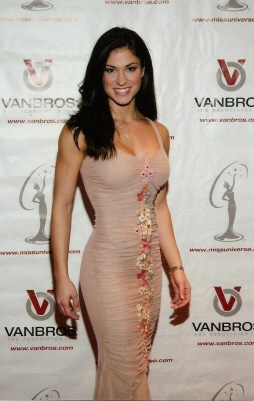
Caitlin McIntosh plays the lead role of Laura. How did you find her and what did you say to convince her to participate in some very physical and decidedly unglamorous scenes?
Caitlin, God bless her, came in to the local casting company in St. Louis and read for the part of one of the “obnoxious girls” in the clothing store. When we saw her, she clearly wasn’t some little teeny-bopper, so we asked her to look at the lines for Laura and brought her back to read for that part. Her audition was OK, but more importantly she had a great rapport with us and we liked her right away. I met and talked with her a bit more, rehearsed with her, and then we set up a video call back, had her run through a few scenes with other actors, put her through the paces, and she got the part.
Believe it or not, I didn’t really have to sell Caitlin too hard on the rougher aspects of what the character would go through. She read the script, liked what she read, and was actually thrilled with the idea that she would be covered with mud for half of the film. Coming from a beauty pageant background, she was over the whole glamour thing. The idea that she wouldn’t have to be fussed over every minute to look perfect was actually a bit of a relief for her.
As for the physical stuff, well, you’ve seen the build on the woman. She is one of the most fit people I’ve ever seen, and I think she loved being physical and tough on camera. As a trained dancer and competitive fitness trainer, she was in her element.
You incorporated some impressive (and icky) special effects, which is unusual for an indie film due to budget. Were these particular elements important to you as the writer and director?
I love effects, know how to do them, and can do them cheaply, but I mainly wanted to strike a balance – if you have effects just for effects’ sake, then you have the Phantom Menace, and no one wants that again. If there are no effects at all, people KNOW it’s a low budget film, so for our film I did the shots that I really felt told the story. As for the make up, the same thing applied. I wanted the effects to be good, but only when needed to tell the story. I didn’t want the show to stop for an effect, and this WAS NOT going to be a gore film. There were a few simple vampire transformations, some well made teeth, some contact lenses, a few simple blood gags, and none of it was really focused on.
I’m old school. I got into this when there were no computers, no digital cameras, no digital cinema, but I’ve become a huge fan of Hi Def. That technology has allowed me to finally get a feature made, and still have it look good. But CGI has gotten out of control. I deal with models, puppets, and practical effects, and I can control those things. If I did this all with computers, then I would have to turn it over to someone else, and be at their mercy. If we had a studio-sized budget, that would be fine, but we don’t, so I keep it as close to home as possible.
What I think computers do and do well is help us edit, and layer images together. There is no more chemical film printing and compositing going on, and I don’t think that’s a bad thing. I think digital projection makes a lot of sense too, because then the image doesn’t wear or fade, pick up scratches or dust. It looks as good during the 1000th projection as it did on the first.
You shot Shadowland in and around the St. Louis area. What are the advantages to shooting entirely in a less traditional location? Are there any disadvantages?
Advantages – it is much cheaper. No one has their hand out, trying to gouge the film company. It is easier to get around, unlike Los Angeles or Chicago, which are more congested. The locations in St. Louis are fresh, and no one has ever seen them on film before. The labor is less expensive. Everyone is excited about the film, not burned out and blasé.
Disadvantages – people don’t know what to expect. They are shocked when you swoop in and take over their place, with so many crew people, so much equipment. Many townships aren’t equipped to handle films, and don’t even have a permit process. The crews aren’t as experienced, but they make up for it with enthusiasm. There isn’t the wide range of rental equipment that you would have access to in a big city.
Plus – and this surprised me – in a small town, everyone knows everyone else, and they talk. One good or bad incident and it’s all over town within hours.
The flashback scenes were beautiful both in costuming and scenery. What made you decide to incorporate a “period” element into the storyline?
I knew about this historic Main Street area in St. Charles, a stretch of preserved historic buildings right on the riverfront. I really loved the old “Hammer Horror” films, and those almost always took place in a period setting, so early on that was just a look and feel that I wanted to try and capture. Then it was just a matter of explaining it, working it into the story.
Since I had already started with the idea that Laura would be a vampire and would crawl out of the ground, it was great excuse to say that she’d been buried for a long time, more than a hundred years, and then that would allow us to do the flashbacks. I wrote the script with the St. Charles Historic District in mind.
Tell us about Pirate Pictures. What do you hope to change about the process of movie making?
One of the key things is that we streamline the creative process – we don’t have a bunch of executives all contributing their two cents worth. It’s three of us, and between us, we make all of the decisions. Marketing and trends can enter into it, but those elements aren’t what guide the process.
We would also like to reduce the overall cost of the production process. It has really gotten out of control.
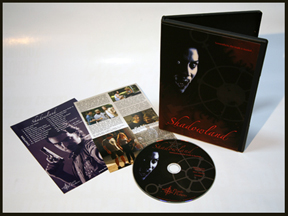 Is this the sort of creative freedom that inspired the name “Pirate Pictures” or if not, where did the name originate; and will the three of you be observing “Talk Like a Pirate Day” on September 19th?
Is this the sort of creative freedom that inspired the name “Pirate Pictures” or if not, where did the name originate; and will the three of you be observing “Talk Like a Pirate Day” on September 19th?
The name Pirate Pictures comes from the fact that our executive producer and two of the original founding members of the company went to a high school where the football team was called the Pirates. Kind of a disappointment, right? Not the kick-ass answer you were looking for.
From the beginning we were fully aware of the fact that the name was very cool, and since our over-riding style is kind of a take charge, break the rules approach, we’re a bit pirate-like in that respect. As for “talk like a pirate day”, well, we work pretty hard, so it will be a matter of REMEMBERING to talk like a pirate when the day comes. Even if we don’t remember, we call Gayle Gallagher, the producer, our pirate wench. So I think we’re covered.
One time, a hard drive case that we were shipping through the mail got stopped and searched because it said “pirate” on the outside of it, which is freakin’ ridiculous because if you really are a pirate, are you going to ANNOUNCE it?!?
What can we look forward to seeing from you in the future?
Hmmm… a Sinbad film? Possibly a John Hughes-type comedy? It could possibly be a drama about a true-life incident that took place near my home town back in the 90’s. To really answer that question, though, we have to see how successful Shadowland will be. We will do more projects, regardless, but Shadowland will really set the tone for where we go next. It might grant us even more freedom, or if it fails, it might make it a bit harder to find financing for the next one.
We will do a next one, regardless. And there’s always the possibility that if Shadowland succeeds, you might see further adventures of Laura…
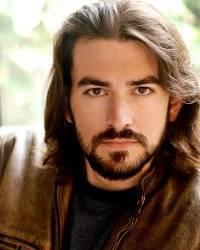
The “festival version” of Shadowland is available now from the Pirate Pictures web site for $12.50 but the full version with special features will be widely released in North America and Canada on November 30th. You’ll find it for sale and rental, in stores and online.
Stay tuned next week when I sit down for a chat with Shadowland’s resident vampire slayer Julian, played by Jason Contini.
Yes, this job does have distinctive advantages…
Have you seen Shadowland or are you an aspiring indie film maker with comments to share? Post them here or email me directly at Sue@blackgate.com but as the juicier the comment the less likely I am to keep it secret, so there’s no promise I won’t splash it all over Black Gate.
[…] a little worked up by my last post. Though I was telling you about my latest indy-horror obsession, Shadowland, one might have gathered from the choices of accompanying pictures, that I was instead bringing you […]
[…] month and my own favorite connection to Hollywood and all things indy-horror, writer and director Wyatt Weed, put me on to this fabulous event. He’s helping to organize the festival and many thanks to him […]
[…] was there I found my friend and film actor Jason Contini (star of Shadowland) along with his partners, brother Nathan Contini, Justin Mitchiner and Nicholas Hearne promoting […]
[…] Wyatt Weed is also the writer/director of the feature vampire thriller Shadowland which has won several awards and been screened around the globe since we first told you about it. […]
[…] us a peek into the world of real movie magic by allowing us to ride along with their production of Shadowland. Now Shadowland star Jason Contini and director Wyatt Weed have teamed up on a new project that […]